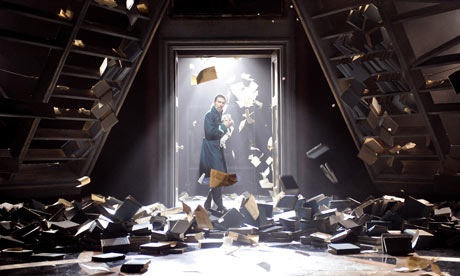
First, library stuff. After a somewhat miserable journey to Paris, one of the first places I had the opportunity to visit was the
American Library in Paris. What began as a private book service for American soldiers in WWI is now the only large, English language library in continental Europe. As such it caters to a variety of users--ex-pats, English speakers in the area, students and professors of American studies. Sometimes academics will even visit the library from abroad. The librarian who spoke with us described the library's functions as a sort of hybrid; the library looks and feels much like a public library, but tries to act as an academic library. The collection consists of popular titles for books, magazines and newspapers, and also academic titles dealing with American culture, social sciences and literature. Because the library is a private institution, they must do all their own fundraising and require an annual fee of 100€ from their users. The library also serves as a kind of community center, offering a variety of programming for children and adults, including movie nights, exhibits, lectures and so on.
After the library tours, I feel like my trip to Paris began in earnest. We went to dinner at a traditional French bistro where I had French onion soup (despite the 90 degree heat), beef with shallots (which were carmalized to perfection--I could have eaten them by themself) and the best creme brulee I've ever had. Exhausted, I headed back to the hotel after dinner.
The following day (after a croissant and cafe au lait) I set out with a group to the
Palace of Versailles. Wow. The immensity and opulence of the place is simply staggering. While I took several pictures, I don't know that any of them do the place justice. Not only is the palace incredible, but the gardens seem to go on forever. The view is spectacular. After attempting to comprehend Versailles, we returned to Paris where I wandered around with a classmate, stopped for crepes, and eventually made our way back to the Eiffel Tower, where the whole group was meeting to go on a riverboat cruise that night. It was touristy, but it was a wonderful way to see the city at night. Watching the Eiffel Tower sparkle was fantastic.
On our last day in Paris, a classmate and I set out early for the
catacombs. The catacombs were eerie. A seemingly endless stone spiral staircase leads you deep underground, and after seeing some preliminary information about the catacombs you wander further and all the walls are made out of human bones. Layers of skulls are stacked on top of layers of other bones. In some areas, the skulls form a design. It's dark down there. And the low ceiling drips water. It was terrifically creepy and I'm so glad I got to go (oddly, it was at the top of my to do list in Paris). After, we wandered around Paris and stopped in a bakery where I ate the most beautiful dessert of my life. It was raspberry mouse wrapped in a kind of cup made out of striped red and white cake, topped with a sort of jam and chopped pistrachios. It was marvelous.
While I didn't get to see everything Paris had to offer, I'm very glad I went and have every intention of going back.
Photo courtesy of Flickr user
Monceau















